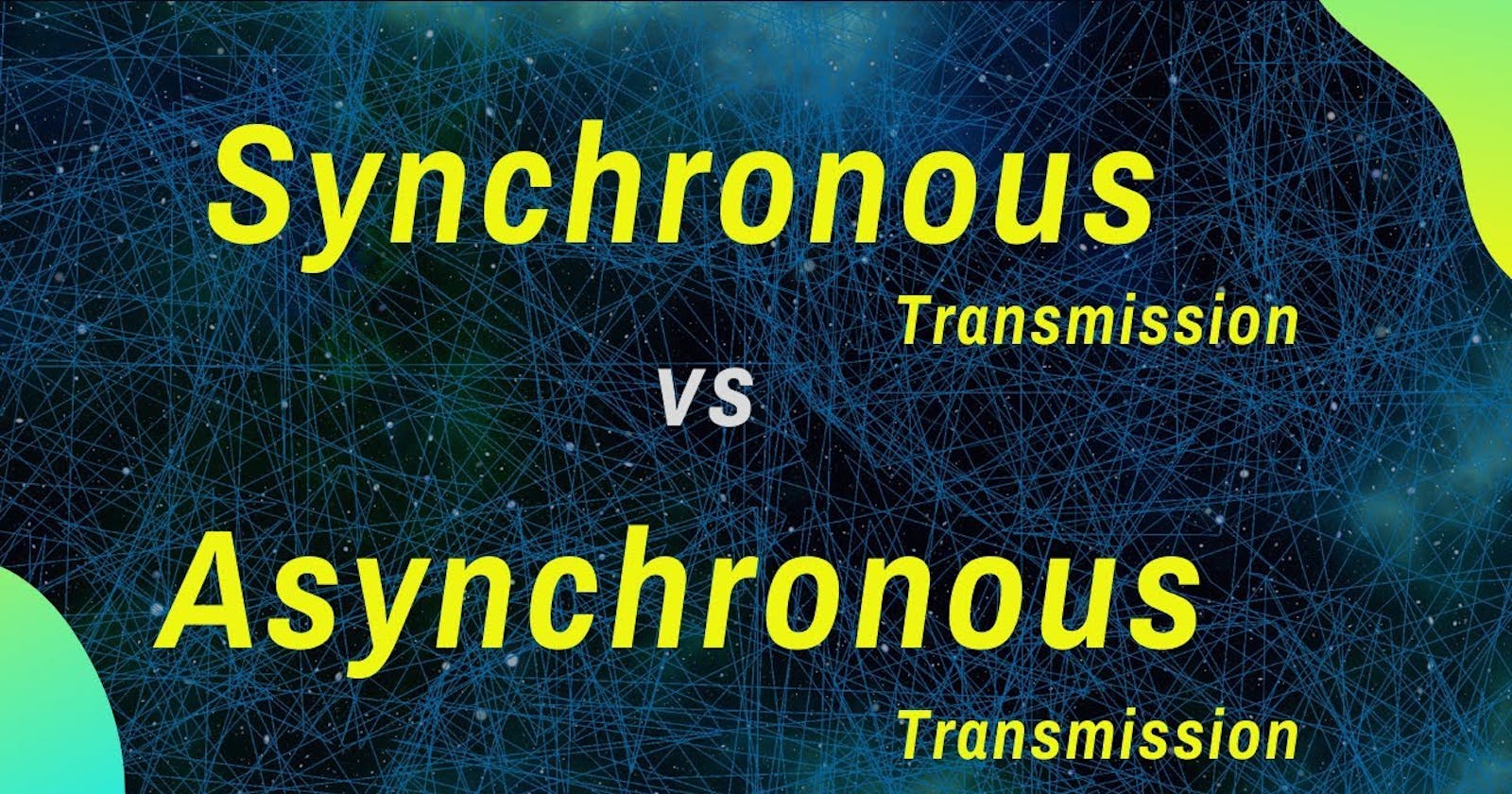Explain Synchronous and Asynchronous Transmission with examples. Mention advantages, disadvantages and difference between them.
Synchronous Transmission :
In synchronous transmission data is sent in form of blocks or frames.
Synchronous transmission is the full-duplex type transmission.
Synchronization between sender and receiver is compulsory.
There is no gap present between data.
Examples : Chat rooms, telephonic conversations, video conferencing.

Advantages of Synchronous Transmission :
It is more efficient foe transmitting large volumes of data.
It has higher speed than asynchronous transmission.
It has less possibility of errors.
It is used for high speed communication.
Disadvantages of Synchronous Transmission :
If an error occurs, the complete set of data is lost.
The characters are transferred at irregular intervals.
Process is more complex.
Not cost effective because hardware are more expensive.
Asynchronous Transmission :
In asynchronous Transmission data is sent in form of byte or character.
This transmission is the half-duplex type transmission.
In this transmission start bits and stop bits are added with data.
It does not require synchronization.
Examples : Emails, Forums, Letters.

Advantages of Asynchronous Transmission :
If error occurs in a character then other sequence of character are not affected.
It does not require synchronization.
It is cost effective.
It is simple to implement.
Disadvantages of Asynchronous Transmission :
Speed of transmission is limited.
It has higher overhead.
It is not efficient for large volumes of data.
Data is lost in this transmission.
Difference between Synchronous and Asynchronous Transmission :

| Synchronous Transmission | Asynchronous Transmission |
| Sends data in the form of blocks or frames. | Sends data in the form of a byte or character. |
| In this, gap between the data does not exist. | In this, gap between the data exist. |
| The time interval is constant. | The time interval is not constant, it is random. |
| The transmission speed is faster. | The transmission speed is slower. |
| This transmission is costly. | This transmission is economical. |
| It is implemented by hardware and software. | It is implemented by only hardware. |
| Examples : Chat rooms, telephonic conversations, video conferencing. | Examples : Emails, Forums, Letters. |
